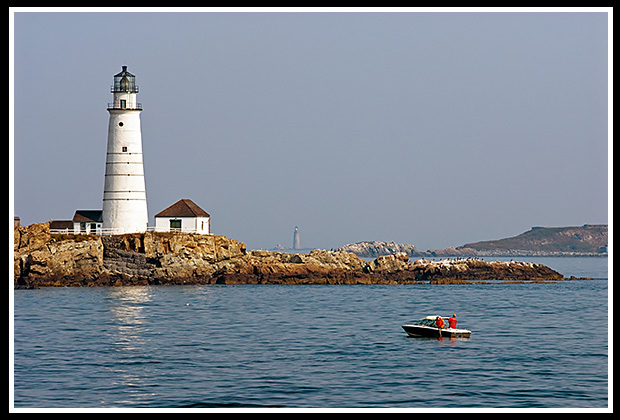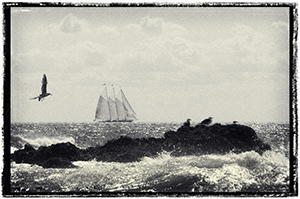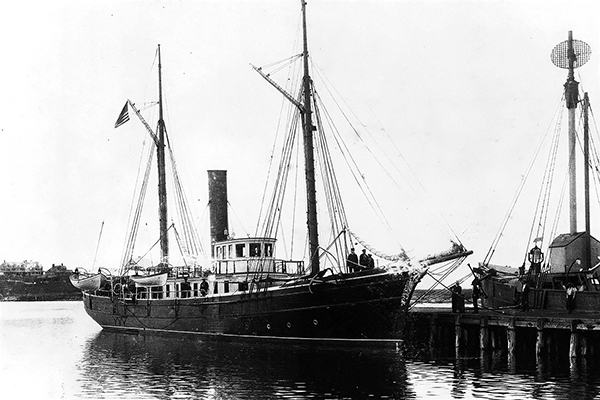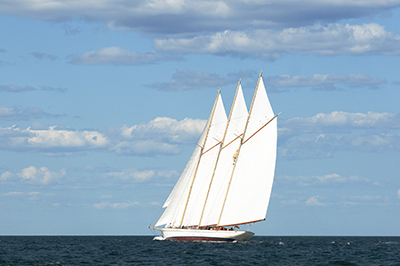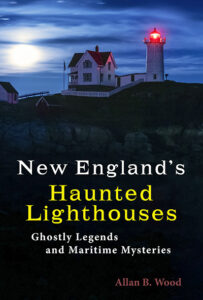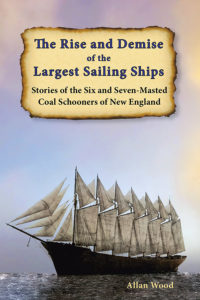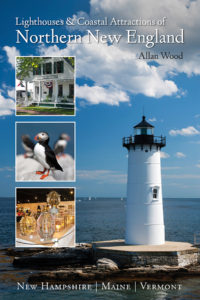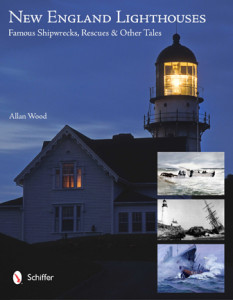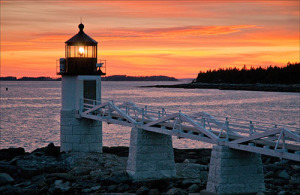Rescue Services That Evolved Into the Coast Guard:
This piece involves a little historical education in understanding the importance of the three rescue services that started at the beginning of our Nation’s history and eventually evolved into our current Coast Guard. These early services were the Lighthouse, Revenue Cutter, and Life Saving Services. After all, if it wasn’t for these services in place, many of our ancestors might not have been able to immigrate to this country safely, and shipping and trade would have been challenging to navigate through the many storms along the coast. Although under different organizations, these same types of services became prevalent in many other countries, and expansion through trade and shipping continued from the late 18th century into the twentieth century.
The Lighthouse Service
New England has arguably the most dangerous coastline in the world. The first lighthouse, Boston Harbor lighthouse in Massachusetts, was built in 1716. By the time the Constitution became the law of the land in 1789, twelve lighthouses were already built in the United States. At this time, lighthouse control passed from the states to the federal government’s Treasury Department as the US Lighthouse Service.
As more lighthouses were established along the eastern coast, they were strategically placed to provide guidance and warn mariners of dangerous reefs, ledges, and shoals. They were used to guide mariners into harbors and ports. Keepers and their assistants’ primary duties were maintaining the lights at all costs. Their daily tasks involved tending the wicks, fueling the tanks, polishing the brass, cleaning the soot of the lenses and prisms, and maintaining the rest of the tower and surrounding buildings. They would also become involved in many rescues at or near the lighthouse. Their rescue equipment consisted of a rowboat or lifeboat, depending on the number of assistants the keeper had, and various lines and preservers for hauling survivors into the boat. There always had to be someone to keep an eye out at the lighthouse, especially during a storm, to ensure the light did not go out and to guide mariners to safety.
Lightships were also used in the late 1800s as mobile floating lighthouses at dangerous locations or in busy shipping channels where building a lighthouse was impossible.
The Revenue Cutter Service
New England is known as the birthplace of our current Coast Guard. Shortly after the Revolution, President Washington began the Revenue Marine Service of ships in Newburyport, Massachusetts, where the first revenue cutter was built. Today, Newburyport is recognized as the birthplace of the Coast Guard. The Revenue Marine Service used its revenue cutters in times of war and for law enforcement to protect our shores.
It wasn’t until the 1830s that these fast vessels would be used for rescue purposes, mainly in open waters offshore where lighthouse keepers could not help reach those wrecks. During the eighteenth and nineteenth centuries, New England became a central commerce region for the shipping, fishing, and whaling trades. More lighthouses were built along the East Coast to accommodate these industries’ needs and warn mariners of dangerous reefs, ledges, and shoals. However, many shipwrecks still occurred with New England’s surprising and often fierce storms.
The Revenue Marine Service was officially designated as the Revenue Cutter Service during the Civil War. After the Civil War, smaller cutters were also built to patrol more closely to the coastline. They were responsible for saving many lives from wrecks within harbors or later as part of rescue coordination efforts with personnel from lighthouses and lifesaving stations. As traffic dramatically increased, including tourism after the Civil War, there came the need for lifesaving stations to be built along the shores within a few miles of lighthouses and from one another.
The Life Saving Service
Where the lighthouse keepers and their assistants made rescues near the lighthouse where they were stationed, lifesaving stations covered a much more vast area. They could assist many distressed survivors on a wreck near the shore. They were more mobile and were specifically trained in their ability to rescue survivors. This idea of having shore-based stations began with trained volunteer services set up by the Massachusetts Humane Society and spread to each state’s Humane Society.
Combining Lighthouse, Life Saving, and Revenue Cutter Services Into Our Current Coast Guard
The Revenue Cutter Service was initially involved in rescue efforts on wrecks out in open waters and then as part of coordinated rescue efforts with the Lighthouse and Life Saving Services. After the Civil War, three branches of marine rescue service were established to aid those in distress: the Lighthouse Service, the Life Saving Service, and the Revenue Cutter Service. Both lighthouse and lifesaving station personnel were funded by and reported to the US Lighthouse Service.
Many events involving maritime rescues occurred near our lighthouses, which is how most of us remember. It is essential to understand that the three branches were all involved in saving lives along the coast. By the late 1800s, they began coordinated rescue efforts together to help increase the chances of saving more lives. As they continued to aid stranded survivors individually and sometimes alongside one another,
Congress merged the Revenue Cutter Service with the Life-Saving Service into what we now know as the Coast Guard in 1915, with the US Lighthouse Service finally transferred in 1939.
Thank you to those who serve or have served to protect our country!
Regards,
Allan Wood
Books to Explore
New England’s Haunted Lighthouses:
Ghostly Legends and Maritime Mysteries
Discover the mysteries of New England’s haunted lighthouses! Uncover ghostly tales of lingering keepers, victims of misfortune or local shipwrecks, lost souls, ghost ships, and more. Many of these accounts begin with actual historical events that later lead to unexplained incidents.
Immerse yourself in the tales associated with these iconic beacons!
The Rise and Demise of the Largest Sailing Ships:
Stories of the Six and Seven-Masted Coal Schooners of New England.
In the early 1900s, New England shipbuilders constructed the world’s largest sailing ships amid social and political reforms. These giants were the ten original six-masted coal schooners and one colossal seven-masted vessel, built to carry massive quantities of coal and building supplies and measured longer than a football field! This self-published book, balanced with plenty of color and vintage images, showcases the historical accounts that followed these mighty ships.
Available also from bookstores in paperback, hardcover, and as an eBook for all devices.

Book – Lighthouses and Coastal Attractions in Southern New England: Connecticut, Rhode Island, Massachusetts
Lighthouses and Coastal Attractions of Southern New England:
Connecticut, Rhode Island, and Massachusetts.
This 300-page book provides memorable human interest stories from each of the 92 lighthouses and an introduction to rescue services. You can explore plenty of indoor and outdoor coastal attractions, including whale-watching excursions, lighthouse tours, windjammer sailing tours, parks, museums, and even lighthouses where you can stay overnight. You’ll also find plenty of stories of hauntings around lighthouses.
Lighthouses and Coastal Attractions of Northern New England:
New Hampshire, Maine, and Vermont.
This 300-page book provides memorable human interest stories from each of the 76 lighthouses and an introduction to the three rescue services that evolved into our current Coast Guard. It also describes and provides contact info for plenty of indoor and outdoor coastal attractions and tours. These include whale watching, lighthouse tours, unique parks, museums, and lighthouses where you can stay overnight. There are also stories of haunted lighthouses in these regions.
New England Lighthouses:
Famous Shipwrecks, Rescues & Other Tales
You’ll find plenty of information about rescue services that evolved into our current Coast Guard. This image-rich book also contains vintage images provided by the Coast Guard and various organizations and paintings by six famous Coast Guard artists.
You can purchase this book and the lighthouse tourism books from the publisher Schiffer Books or in many fine bookstores such as Barnes and Noble.
Copyright © Allan Wood Photography; do not reproduce without permission. All rights reserved.
Join, Learn, and Support The American Lighthouse Foundation
